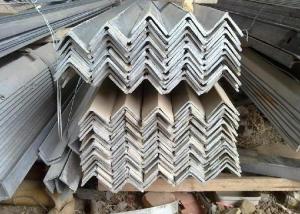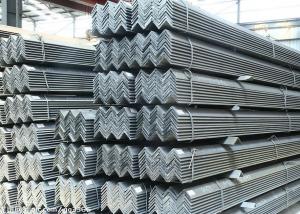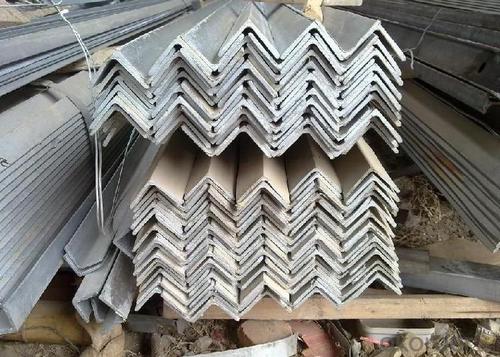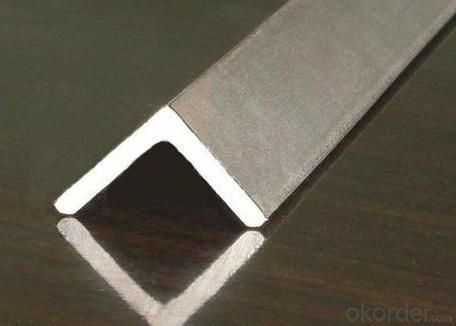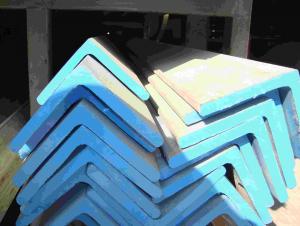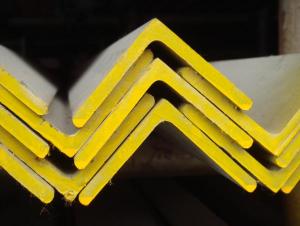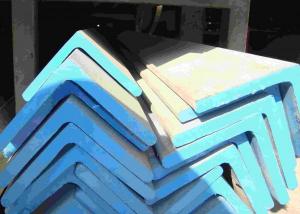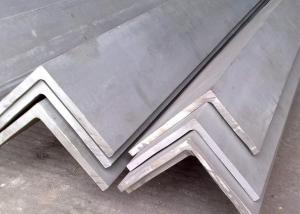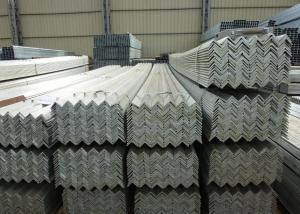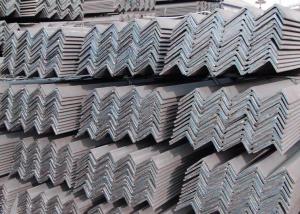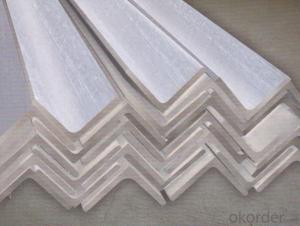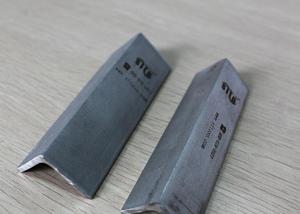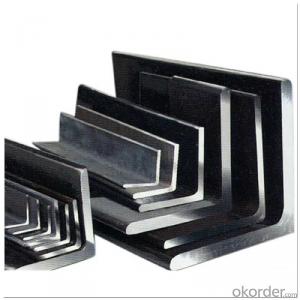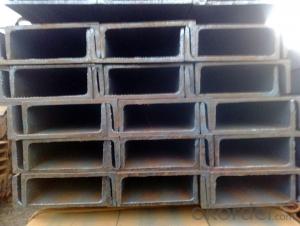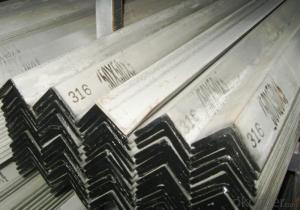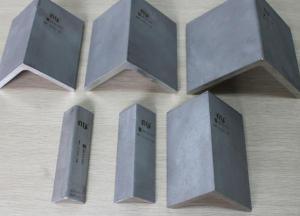304L Stainless Steel Angles
- Loading Port:
- China Main Port
- Payment Terms:
- TT or LC
- Min Order Qty:
- 5 Tons m.t.
- Supply Capability:
- 1000 Tons Per Month m.t./month
OKorder Service Pledge
OKorder Financial Service
You Might Also Like
Stainless Steel Angles
1.Grade: SS200,300,400 series
2.Size: 25×25×3 mm-100×100×10mm
3.Process: HRAP
4. Length: 2-6m
5. Shape: Equal
6. Delivery: within 20 days
7. MOQ: 1 ton
8. Certificate: ISO 9001:2008, SGS
9. Package:Standard Export Packing, or put into wooden boxes according to your
requirement
10. Application: Construction, Marine, Industry and so on
|
Name |
Stainless Steel Angles | ||||||
|
Standard |
ASTM A554, A312, A249, A269 and A270 | ||||||
|
Material Grade |
304,316,201,202, 316L,430 | ||||||
|
Length |
6m or as customers' request | ||||||
|
Tolerance |
a) thickness: +/-0. 15mm | ||||||
|
| |||||||
|
b) Length:+/-4. 5mm - 0mm | |||||||
|
Surface |
180G, 320G, 400G Satin / Hairline(Matt Finish, Brush, Dull Finish) 400G, 500G, 600G or 800G Mirror finish | ||||||
|
Application |
Decoration construction, upholstery, industry instruments | ||||||
|
Test |
Squash test, Extended test, Water pressure test, Crystal rot test, Heat treatment, NDT | ||||||
|
Chemical Composition of Material |
Composition
Material |
201 |
202 |
304 |
316L |
430 | |
|
C |
≤0.15 |
≤0.15 |
≤0.08 |
≤0.08 |
≤0.12 | ||
|
Si |
≤1.00 |
≤1.00 |
≤1.00 |
≤1.00 |
≤1.00 | ||
|
Mn |
5.5-7.5 |
7.5-10 |
≤2.00 |
≤2.00 |
≤1.00 | ||
|
P |
≤0.06 |
≤0.06 |
≤0.045 |
≤0.045 |
≤0.040 | ||
|
S |
≤0.03 |
≤0.03 |
≤0.030 |
≤0.030 |
≤0.030 | ||
|
Cr |
16-18 |
17-19 |
18-20 |
16-18 |
16-18 | ||
|
Ni |
3.5-5.5 |
4-6 |
8-10.5 |
10-14 |
| ||
|
Mo |
|
|
|
2.0-3.0 |
| ||
|
Mechanical Property |
Material Item |
201 |
202 |
304 |
316L | ||
|
Tensile Strength |
≥535 |
≥520 |
≥520 |
≥520 | |||
|
Yield Strength |
≥245 |
≥205 |
≥205 |
≥205 | |||
|
Extension |
≥30% |
≥30% |
≥35% |
≥35% | |||
|
Hardness (HV) |
<253 |
<253 |
<200 |
<200 | |||
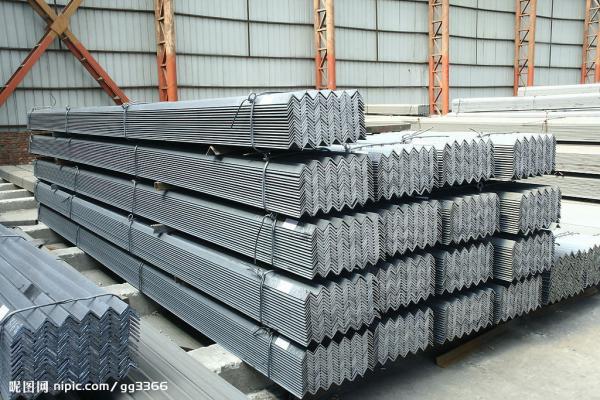
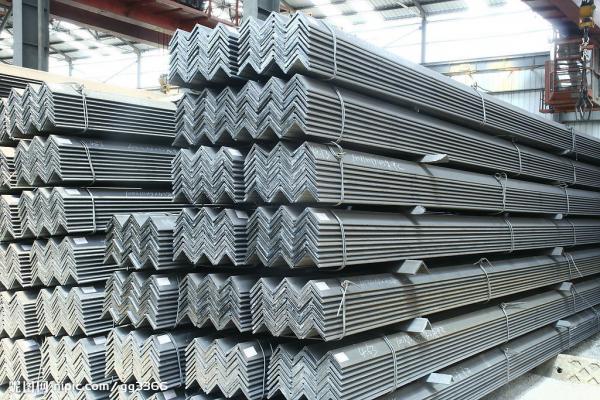
- Q: What are the different grades of stainless steel used for angle?
- The different grades of stainless steel commonly used for angle are 304, 316, and 430.
- Q: What are the safety precautions when working with stainless steel angle?
- When working with stainless steel angle, some important safety precautions to consider include wearing appropriate personal protective equipment (PPE) such as safety glasses, gloves, and a respirator if necessary. It is also important to ensure proper ventilation in the work area to minimize exposure to fumes or dust. Additionally, using the correct tools and techniques, such as using clamps or vices to secure the material, can help prevent accidents or injuries. Lastly, being aware of the sharp edges and corners of the stainless steel angle and handling it with care can reduce the risk of cuts or punctures.
- Q: How do you calculate the plastic section modulus of a stainless steel angle?
- To calculate the plastic section modulus of a stainless steel angle, you need to follow a specific formula that takes into account the dimensions and properties of the angle. The plastic section modulus (Z) is a measure of a shape's resistance to bending and is an important parameter in structural engineering. It represents the ability of a cross-section to resist bending stresses when the material reaches its plastic deformation stage. The formula to calculate the plastic section modulus of a stainless steel angle is: Z = (b * h^2) / 4 Where: Z is the plastic section modulus b is the width of the angle h is the height of the angle In this formula, the width is considered the longer dimension of the angle, while the height is the shorter dimension. The plastic section modulus is expressed in units of length cubed (e.g., mm^3, in^3). It is important to note that the plastic section modulus assumes that the material has reached its plastic deformation stage and can no longer return to its original shape. This calculation is typically used for designing structures that are subjected to high bending loads, as it helps determine the maximum bending stress that a given cross-section can withstand before permanent deformation occurs. To calculate the plastic section modulus accurately, it is crucial to ensure that the dimensions of the stainless steel angle are measured correctly. Additionally, it is important to consider the material properties and any relevant safety factors based on the intended application and design codes.
- Q: Can stainless steel angles be used in solar panel installations?
- Yes, stainless steel angles can be used in solar panel installations. Stainless steel is known for its corrosion resistance, durability, and strength, which make it an ideal material for outdoor applications such as solar panel installations. Stainless steel angles provide structural support and stability to the solar panels, ensuring they can withstand the elements, including wind and snow loads. Additionally, stainless steel angles are easy to install and maintain, making them a popular choice for solar panel installations.
- Q: What are the different surface treatments available for stainless steel angles?
- Some of the different surface treatments available for stainless steel angles include polishing, brushing, bead blasting, and passivation. Polishing helps to create a smooth and reflective surface, while brushing gives a textured and matte finish. Bead blasting involves propelling fine glass beads at high velocity to create a uniform and slightly rough surface. Passivation is a chemical treatment that removes contaminants and enhances the corrosion resistance of the stainless steel.
- Q: Are stainless steel angles suitable for the production of handrails?
- Yes, stainless steel angles are suitable for the production of handrails. Stainless steel is a highly durable and corrosion-resistant material, making it ideal for outdoor applications such as handrails. The angles provide structural support and stability to the handrails, ensuring they can withstand the necessary loads and provide a safe grip for users. Additionally, stainless steel angles can be easily fabricated and customized to meet specific design requirements, allowing for a wide range of handrail styles and configurations. Overall, stainless steel angles offer a reliable and visually appealing option for the production of handrails.
- Q: Can stainless steel angles be heat treated?
- Stainless steel angles are capable of undergoing heat treatment. The process involves subjecting the stainless steel to a specific temperature and subsequently cooling it at a fast or slow rate, depending on the desired outcome. By doing so, the mechanical properties of the stainless steel angles can be enhanced, including hardness, strength, and durability. However, it is worth noting that not all stainless steel alloys are suitable for heat treatment. Whether a stainless steel angle can be heat treated or not depends on the specific grade of stainless steel used. Some stainless steel alloys are designed to be heat-treatable, whereas others are not. Thus, it is essential to refer to the manufacturer's specifications or seek professional advice to ascertain if a particular stainless steel angle can undergo heat treatment.
- Q: Can stainless steel angle be used in food processing equipment?
- Yes, stainless steel angle can be used in food processing equipment. Stainless steel is widely used in the food processing industry because of its many desirable properties. It is resistant to corrosion, easy to clean, and does not react with food or alter its taste. Stainless steel angle, which is often used for structural support or as a framework in equipment, provides the same benefits. It is durable, hygienic, and can withstand the harsh conditions of food processing environments. Additionally, stainless steel meets the strict sanitary standards and regulations set by food safety organizations. Therefore, stainless steel angle is a suitable choice for food processing equipment.
- Q: How do you calculate the section modulus for an unequal leg stainless steel angle?
- To determine the section modulus for an unequal leg stainless steel angle, one must take into account the angle's geometry and the material properties of the stainless steel. The section modulus is a characteristic that gauges a shape's resistance to bending. It is computed by dividing the shape's moment of inertia by the distance from the shape's centroid to the outermost fiber. For an unequal leg stainless steel angle, the moment of inertia is found by considering the angle's dimensions. The moment of inertia is calculated separately for the major and minor axes of the angle. To calculate the moment of inertia for the major axis, the width of the longer leg (b) is multiplied by the cube of its distance from the centroid (y). Then, the product of the width of the shorter leg (d) and the cube of its distance from the centroid is subtracted. Finally, the result is divided by 3. For the minor axis, the width of the shorter leg (d) is multiplied by the cube of its distance from the centroid (x). Then, the product of the width of the longer leg (b) and the cube of its distance from the centroid is subtracted. Once again, the result is divided by 3. Once the moment of inertia is obtained for both axes, the section modulus can be calculated by dividing the moment of inertia by the distance from the centroid to the outermost fiber. In the case of an unequal leg angle, this distance is typically half of the width of the longer leg (b/2). It is crucial to note that the section modulus is unique to the angle's cross-sectional shape, dimensions, and the stainless steel's material properties. Therefore, it is vital to refer to appropriate design codes or engineering handbooks for the specific formulas and values required for the calculation.
- Q: What are the design considerations when using stainless steel angles?
- When using stainless steel angles, there are several important design considerations to keep in mind. Firstly, it is crucial to consider the load-bearing capacity of the angles and ensure they can support the intended weight or force. Additionally, corrosion resistance is a key factor, as stainless steel is known for its ability to withstand rust and corrosion. The aesthetic appeal of the angles should also be considered, as stainless steel angles can add a sleek and modern look to a design. Finally, it is important to take into account the dimensions and sizes of the angles to ensure they fit properly and meet the specific requirements of the project.
1. Manufacturer Overview
| Location | Jiangsu, China |
| Year Established | 2010 |
| Annual Output Value | above US$3 million |
| Main Markets | East Asia, Middle East. |
| Company Certifications |
2. Manufacturer Certificates
| a) Certification Name | |
| Range | |
| Reference | |
| Validity Period |
3. Manufacturer Capability
| a) Trade Capacity | |
| Nearest Port | Shanghai |
| Export Percentage | 50% |
| No.of Employees in Trade Department | above 10 people |
| Language Spoken: | English, Chinese |
| b) Factory Information | |
| Factory Size: | about 50000 square meter |
| No. of Production Lines | above 3 |
| Contract Manufacturing | OEM Service Offered |
| Product Price Range | Average |
Send your message to us
304L Stainless Steel Angles
- Loading Port:
- China Main Port
- Payment Terms:
- TT or LC
- Min Order Qty:
- 5 Tons m.t.
- Supply Capability:
- 1000 Tons Per Month m.t./month
OKorder Service Pledge
OKorder Financial Service
Similar products
Hot products
Hot Searches
Related keywords
